Interviews Vol. 1 – The Hazara Redesign (Part 2)This is the second part of our interview about the redesign of the Hazara leaf-shaped plate in 2021.
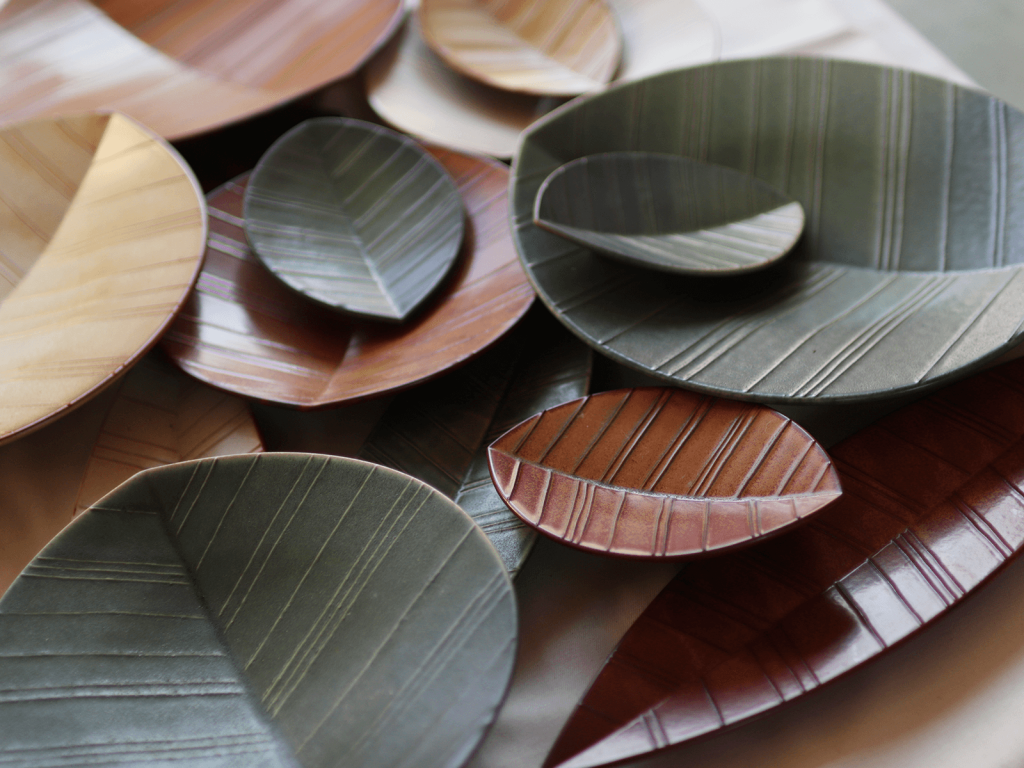
Ceramic Japan’s HAZARA was produced in 1995 with traditional glazes of various colors and designed with a Japanese tableware atmosphere when it was first introduced.
In 2020, a proposal was made to display the HAZARA for an overseas exhibition, and after consulting with designer Makoto Komatsu, the project to renew the product was launched. The project for the renewal of the leaf plate began.
Times, people’s lifestyles, and trends have changed dramatically since HAZARA was first released in 1995. While some things do not change, we asked designer Makoto Komatsu about what HAZARA designs can meet today’s needs, and his thoughts on future manufacturing on the occasion of the renewal project. This issue continues from the previous issue, focusing on the content of the interview.
-

Q. How did you come up with the HAZARA design?
We sometimes use our hands as a form of vessel to scoop up water, but I believe that from time immemorial, it must have been leaves that were probably used as vessels other than hands. Because of this, many crafts in general are made in the shape of plant leaves.
This is especially true of ceramics, and I have the impression that many of these designs are realistic in their representation. In the HAZARA series, the leaves of plants are not realistic, but rather abstracted and arranged in shape. -
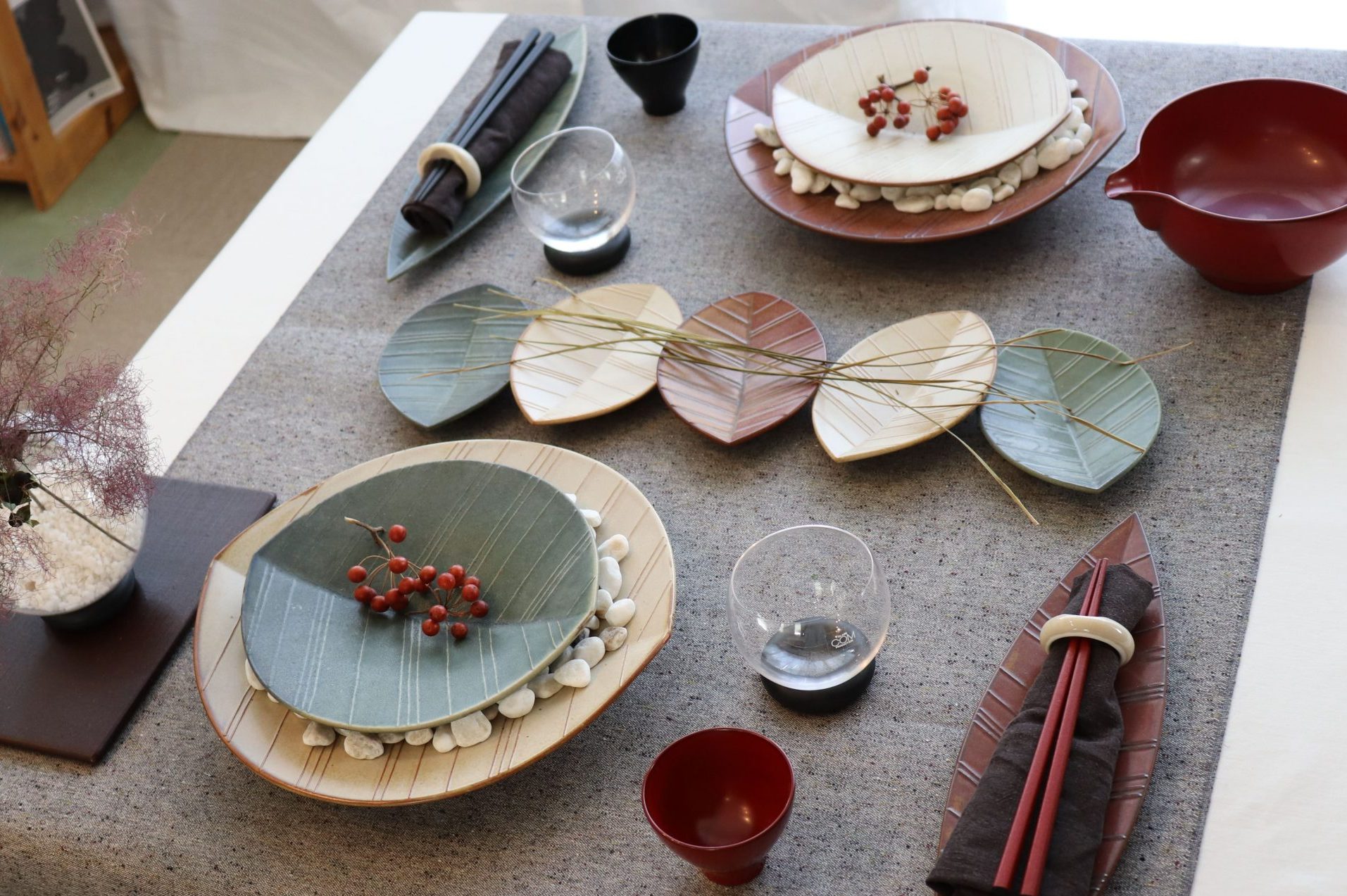
Q. What is your favorite part of this series? If you were to use it, what would it be?
The random effect created by the kiln's flame on the clay and glaze makes each piece of pottery different from the others, even though they are mass-produced. Rather than daily use, these dishes are for when you want to make a change in your daily life, for seasonal changes, for celebrations, for happy times, or for sad times.
The ingredients are clearly visible and in season, such as bamboo shoots, raw oysters on the shell, asparagus, edamame, steamed clams, pasta, cold soba noodles with grated daikon, broccoli, and so on. -
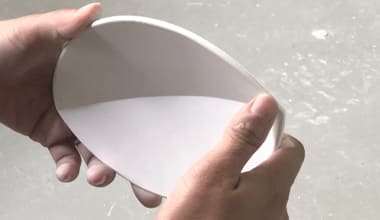
Q. How did you make the original mold of HAZARA that you created?
Make many maquettes (small models) and pick out the ones you like best. Enlarge it to full size and check its shape. Once a satisfactory one is found, a larger one is made by calculating the shrinkage peculiar to ceramics.
In the case of HAZARA, the first step is to cut out a plastic or aluminum plate, fit two pieces together to make a shape, and then pour plaster between them to make a mold. A gap is made between the two molds, plaster is poured into the gap to make the body, and a base is attached to the bottom to make the original shape. -
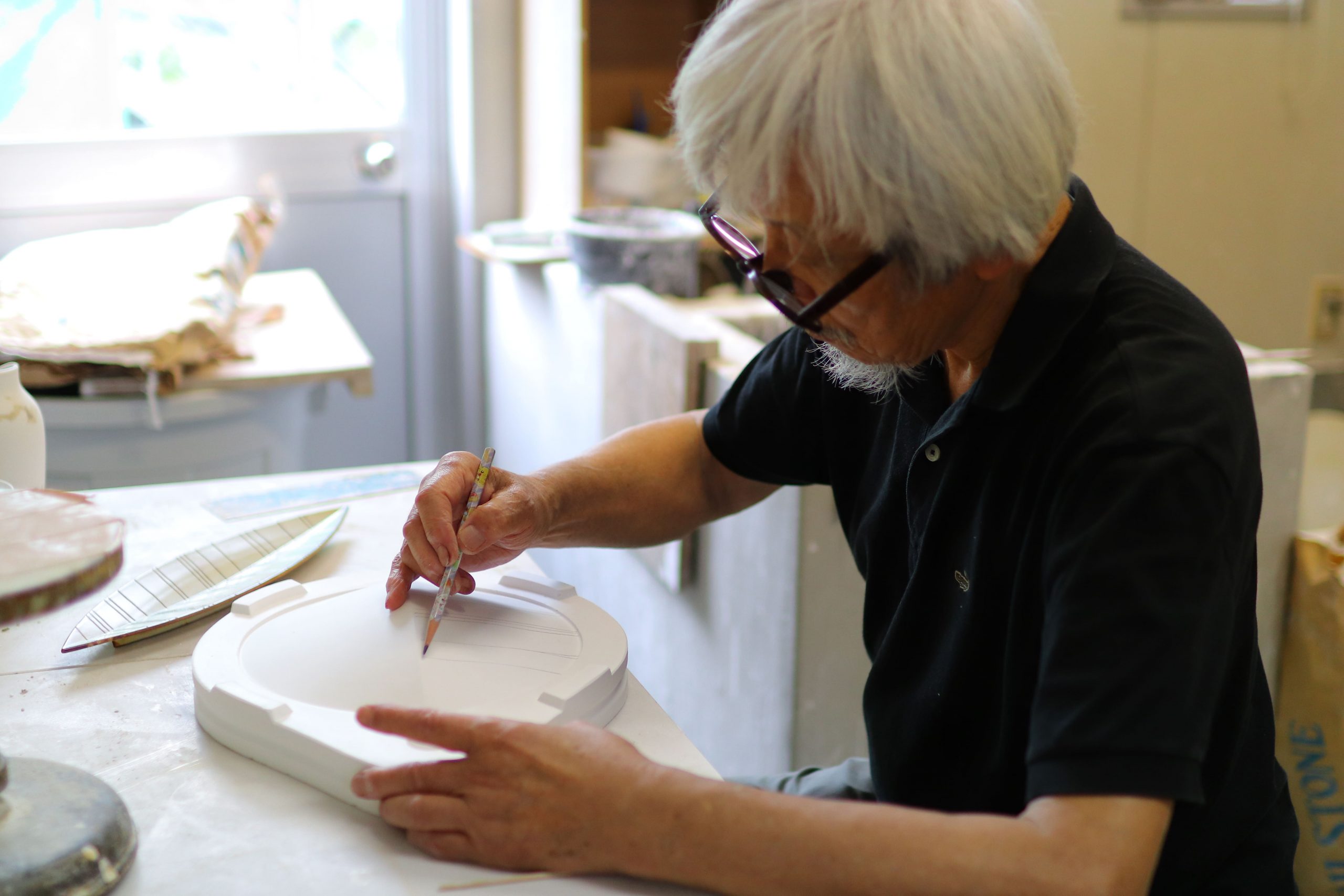
Q. You carved the reliefs yourself. What is your concept behind the reliefs on HAZARA?
Mass-produced items are made in large quantities using molds, but it is possible to create new and original expressions by adding various techniques. Painting by hand is one of these techniques.
The carving into the mold itself is possible only with plaster, a soft material used in ceramic production molds, and we believe that this unique technique allows HAZARA to retain traces of handiwork even though it is a mass-produced product. -

Q. Through your many products and works, how have vessels come to mean something to you?
Looking back over the more than 50 years since I began my design career, I have made tableware, vases, pouring vessels, tea sets, sake cups, lighting fixtures, chairs, desks, and other fixtures....
I have designed tableware, vases, pouring vessels, tea sets, sake cups, lighting fixtures, chairs, tables, and other fixtures. In this way, you could say that I am a "designer of vessels". For me, vessels is indispensable. My heart is captured by vessels. -
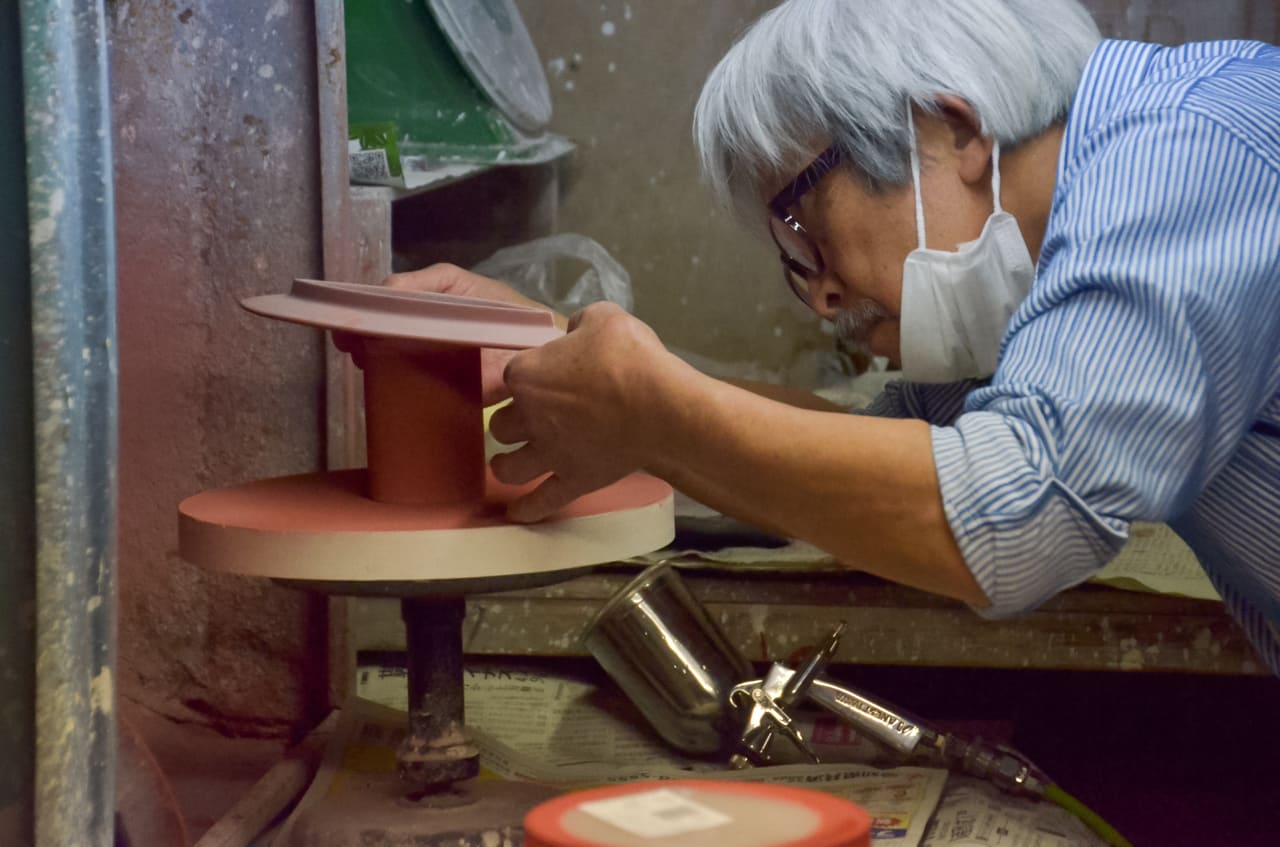
Q. What is your vision for your work, both now and in the future?
Global design activities in the latter half of the 20th century have made simple, modern, and functionalist design mainstream and prevalent in the world. However, that is not all.
We want to broaden the range of interesting things and expand the world of comfortable living through anti-simple modernity. Taking advantage of being a small manufacturer, we would like to carefully produce products that are full of originality, small in quantity, but long-lasting, which large companies cannot do.
Mr. Makoto Komatsu has been involved in the design of many of Ceramic Japan’s product series. Even for the HAZARA series, we can sense from the interview his many thoughts on design, his curiosity about materials, and his spirit of exploration. Of course, there are many stories behind his other products as well. We would like to hear about other products as well, if we have the chance.
Ceramic Japan has many more products by designers who are active in Japan and abroad. We would like to delve deeper into these products and introduce them to you.
Please look forward to vol.2 !!


